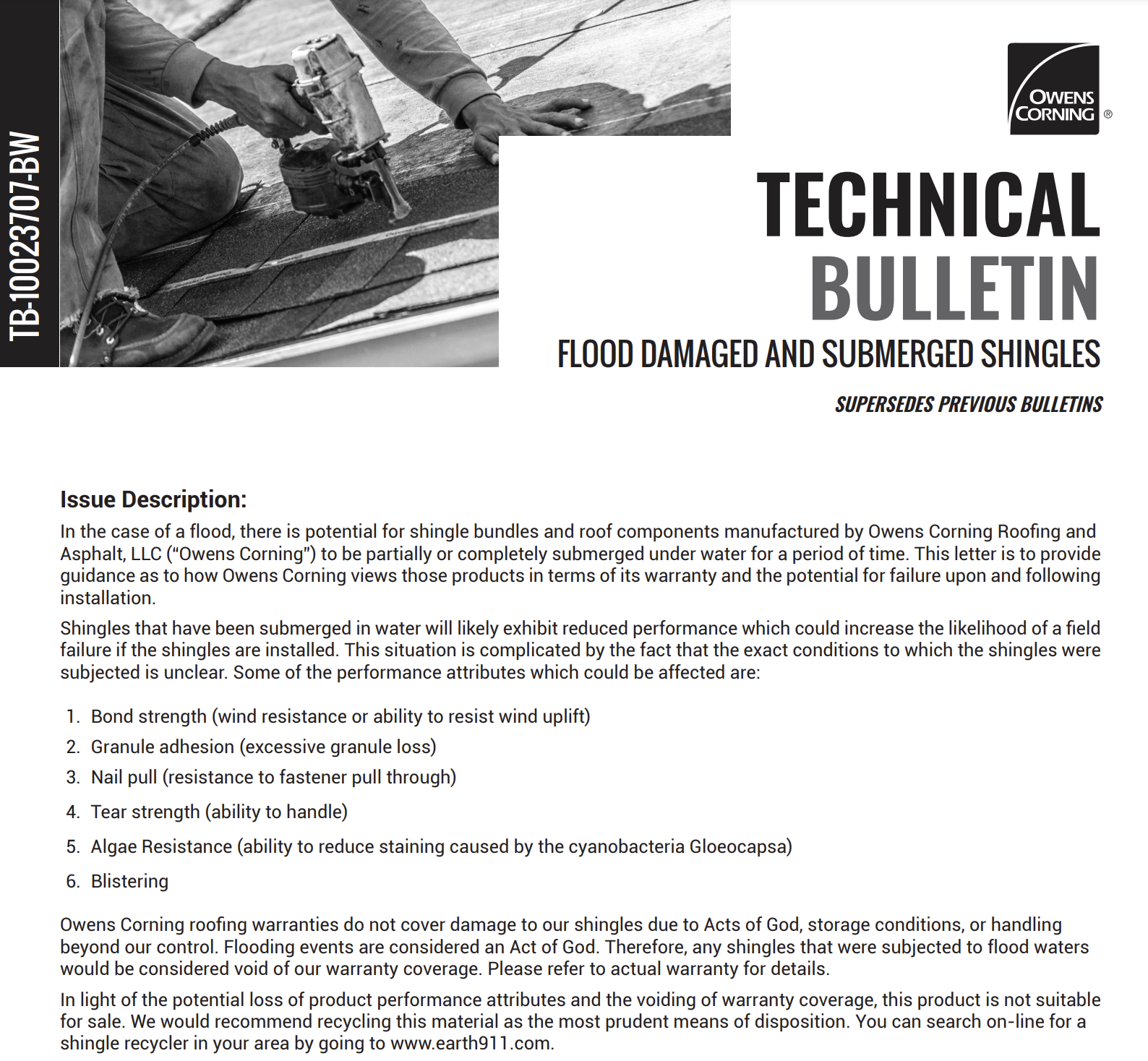Understanding the Impact of Flood Damage on Asphalt Shingles
Flooding can have severe effects on roofing materials, particularly asphalt shingles. When shingles and other roof components are submerged in water, their performance can be significantly compromised. Owens Corning Roofing and Asphalt, LLC (“Owens Corning”) offers specific guidance on how these products are affected and the implications for their warranty and future use.
Key Performance Attributes Affected by Flooding
- Bond Strength:
- Submersion in water can weaken the adhesive bond, reducing the shingles’ resistance to wind uplift.
- Granule Adhesion:
- Flood water can cause excessive granule loss, diminishing the shingles’ ability to protect against UV radiation and physical damage.
- Nail Pull Resistance:
- Water exposure can weaken the shingles’ resistance to fastener pull-through, making them more susceptible to wind damage.
- Tear Strength:
- Flooding can compromise the shingles’ structural integrity, making them more prone to tearing during handling and installation.
- Algae Resistance:
- The ability of shingles to resist staining from cyanobacteria (Gloeocapsa) can be reduced after submersion.
- Blistering:
- Exposure to flood water increases the likelihood of blistering, which can further degrade shingle performance.
Warranty Considerations
- Exclusions:
- Owens Corning’s roofing warranties do not cover damage caused by Acts of God, including flooding events. Therefore, any shingles exposed to flood waters are void of warranty coverage. This includes performance issues arising from storage conditions and handling beyond Owens Corning’s control.
Recommendations for Handling Flood-Damaged Shingles
- Inspection and Assessment:
- Any shingles that have been submerged in water should be inspected for signs of damage such as reduced bond strength, granule loss, weakened nail pull resistance, tear strength issues, and blistering.
- Avoid Installation:
- Shingles that have been exposed to flood waters are not suitable for installation due to the increased risk of field failure.
- Recycling:
- Instead of attempting to use flood-damaged shingles, recycling them is the most prudent means of disposition. This ensures that compromised materials do not end up on roofs, potentially leading to future issues.
- Homeowners and contractors can find shingle recycling options by visiting Earth911.
Conclusion
Flood-damaged shingles pose a significant risk to roof performance and integrity. Understanding the impact of water exposure on shingle attributes is crucial for maintaining the safety and longevity of roofing systems. Proper inspection, assessment, and recycling are recommended to handle flood-damaged materials responsibly.
For Immediate Service or Consultation
Contact Allied Emergency Services, INC.
Phone: 1-800-792-0212
Email: Info@AlliedEmergencyServices.com
Location: Serving Illinois, Wisconsin, and Indiana with a focus on the greater Chicago area.
If you require immediate assistance or have specific questions, our human support is readily available to help you.
Disclaimer: This article is intended for informational purposes only. For professional advice, consult experts in the field.










